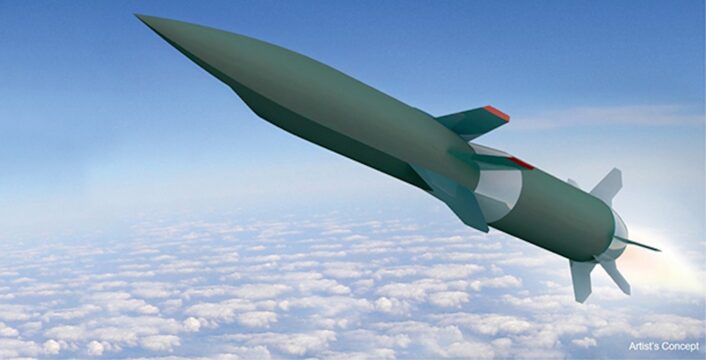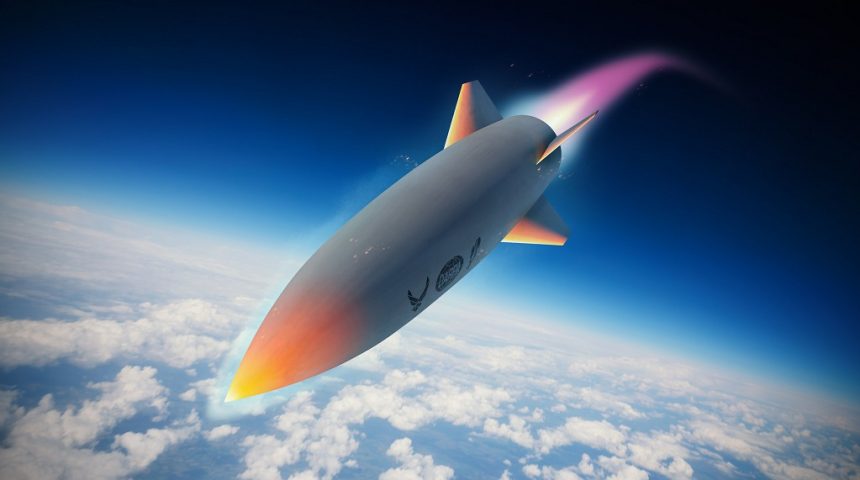The data acquired will be used for the More Opportunities HAWC program and other hypersonic technologies.
The Defense Advanced Research Projects Agency (DARPA) recently announced the successful completion of the final test of the Hypersonic Airbreathing Weapon Concept, accomplishing all the program’s objectives. HAWC is the joint DARPA/U.S. Air Force effort that seeks to develop and demonstrate critical technologies to enable an effective and affordable air-launched hypersonic cruise missile.
The data gathered during the test will be used to inform Air Force Research Laboratory (AFRL) hypersonic technology maturation efforts. “This month’s flight added an exclamation point to the most successful hypersonic airbreathing flight test program in US history,” said Walter Price, an Air Force deputy for the HAWC program. “The things we’ve learned from HAWC will certainly enhance future U.S. Air Force capabilities.”
The final test used the Lockheed Martin version of the missile, which is propelled by an Aerojet Rocketdyne scramjet and already performed another test flight in March 2022. The missile, launched from a B-52, flew at speeds greater than Mach 5, higher than 60,000 feet, and farther than 300 nautical miles, says the press release, demonstrating improved capabilities and performance over the previous test.
The weapon, designed by Lockheed Martin’s Skunk Works and Aerojet Rocketdyne with low-cost advanced manufacturing technologies, prioritizing extreme durability to vastly reduce piece and part cost by using a purposeful integration of digital technologies throughout the design, test, and manufacturing process.
“Affordability and reliability are essential as we work to develop operational hypersonic solutions,” said John Clark, vice president and general manager Lockheed Martin Skunk Works. “Both of our HAWC flight tests launched from an operational aircraft and matched performance models and predictions to aid affordable, rapid development of future hypersonic weapons.”
The HAWC program evaluated also another missile configuration designed by Raytheon and Northrop Grumman, which flew in September 2021 and July 2022. According to DARPA, the missile achieved speed, altitude and range similar to the ones reached by Lockheed Martin’s variant of the missile. The HAWC program used both designs to address three critical technology challenge areas, air vehicle feasibility, effectiveness, and affordability.

Among the technologies of interest examined there are advanced air vehicle configurations capable of efficient hypersonic flight, hydrocarbon scramjet-powered propulsion to enable sustained hypersonic cruise, approaches to managing the thermal stresses of high-temperature cruise and affordable system designs and manufacturing approaches.
“The HAWC program created a generation of new hypersonic engineers and scientists,” said Andrew “Tippy” Knoedler, the HAWC program manager. “HAWC also brought a wealth of data and progress to the airbreathing hypersonic community. The industry teams attacked the challenge of scramjet-powered vehicles in earnest, and we had the grit and luck to make it work.”
Hypersonic air-breathing vehicles utilize air captured from the atmosphere to achieve sustained propulsion without the need of rotating parts. The fast-moving, compressed air flow coming through the scramjet engine’s inlet is mixed with a hydrocarbon fuel and ignites, before being ejected trough a nozzle which propels the missile at a speed greater than five times the speed of sound.
The speed and maneuverability of hypersonic cruise missiles allow both evasion of defenses, as speed and maneuverability make it difficult to detect in a timely way, and quick strikes. Their significant kinetic energy can effectively destroy targets even without high explosives.
With HAWC program completing the test activities, DARPA now plans to continue that maturation in the More Opportunities with HAWC (MOHAWC) program by building and flying more vehicles that build upon HAWC’s advances. Those missiles will expand the operating envelope of the scramjet and provide technology on-ramps for future programs of record.
The completion of the HAWC program follows the first successful launch of the full prototype operational missile of the troubled AGM-183A Air-launched Rapid Response Weapon in December 2022. While the first tests focused on the booster performance, which is required in order to reach supersonic speed and ignite the scramjet, the latest test focused on the entire operational flight profile of the missile, the ability to reach its target and detonate in the terminal area.









